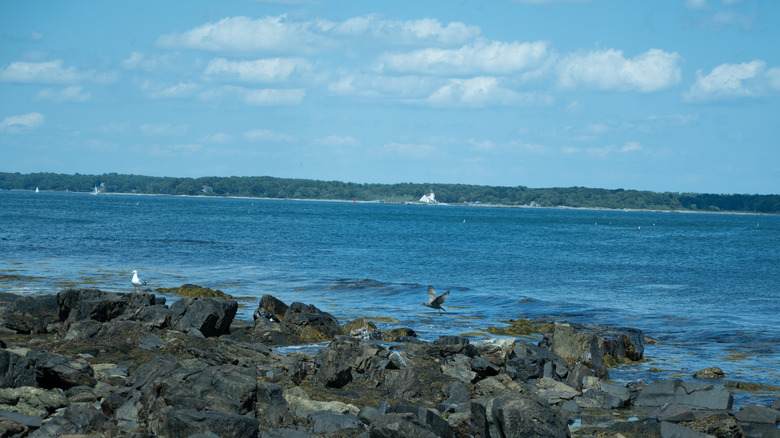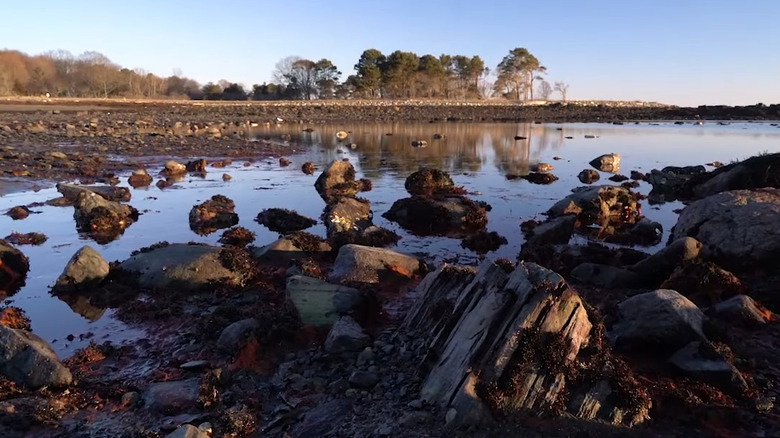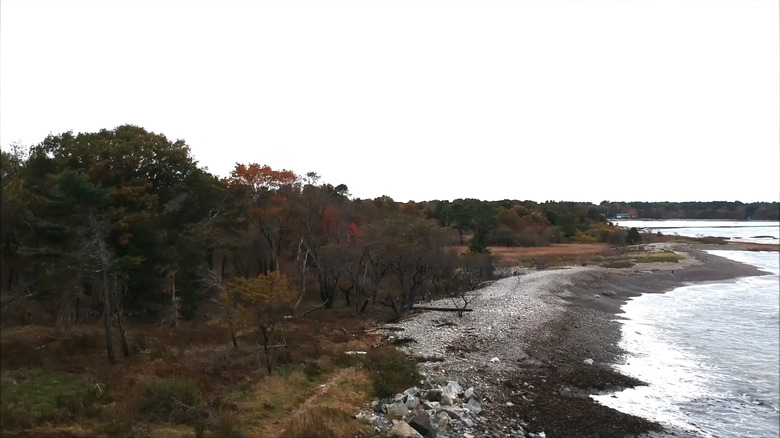New Hampshire's Coast Hides A Secret 'Sunken Forest' With One-Of-A-Kind Landscapes To Explore
If you're spending the weekend at the laidback New Hampshire beach town of Rye, you're probably looking for a quiet, luxurious experience. The beaches here have attracted tourists since the 1840s, but if you step away from the golf courses and tennis courts and explore the coast, however, you might just find glimpses of a New Hampshire far older than that. Around 4,000 years ago, a mighty forest stood where Odiorne Point and Jenness State Beach are today. While the forest is long gone, you can still see the stumps of some of these ancient trees. This area is known as the sunken forest, or sometimes, the drowned forest.
If you didn't know to look for them, the remains of these trees might not catch your eye as you walk along the shore at Odiorne Point, and if they do, you might not realize their age. At Jenness State Beach they are almost always hiding beneath the waves. If you're able to get a look at them, however, they are a fascinating look into what New Hampshire, the safest state in America, used to be like, and the hidden natural world that still thrives there today, below the surface.
The sunken forest provides a glimpse into New Hampshire's past
20,000 years ago the region that was once Rye, New Hampshire was governed by glaciers. Over thousands of years, ice melted and the ocean rose. Land that was once pushed down by ice started rising up again. For a time, this region became a forest wetland, with towering hemlocks and cedars. Over time, however, the sea rose up again, killing the forest. Some of the trees were a century old when they were drowned under the Atlantic.
The stumps that you might be able to see along the rocky beaches in Rye don't look ancient. In fact, they look like they might have been felled recently. While you can't see how high these trees once stood, you can see how massive they were by their circumference. These chunks of ancient wood can be up to 10 feet around. Keep your eyes peeled as you walk through the shallows, however. There can be more fascinating historical artifacts waiting under the waves. The local fishermen around Rye have found the remains of mammoths and mastodons, creatures which once lived in modern-day New Hampshire, in the water.
How to explore the drowned first for yourself
If you want to walk along the beach looking for signs of an ancient world, head to Odiorne Point State Park in Rye. Not only is this the perfect opportunity to visit the Seacoast Science Center, hit the biking trails, and enjoy a seaside picnic,you have the best chance of spotting the sunken forest from this spot. Make sure to arrive at the very lowest point of low tide and walk all the way down to the park's southern edge to Periwinkle Cove. The drowned forest will be waiting.
As you walk the coast, spotting little crabs and lobsters crawling over ancient tree stumps, you might long to see more than what shows above the surface at low tide. If you want to explore deeper, you might want to consider diving at high tide — which is actually only around 15 feet high at the deepest. As you swim along the bottom, you'll see the remains of trees emerge from the seafloor. This is a relatively easy place for less experienced divers to practice their new skills — make sure to check out our beginner's guide to scuba diving like a professional for more tips before you go.


